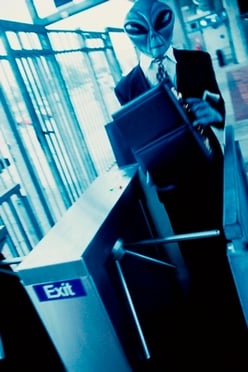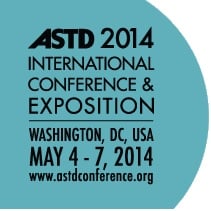 Yeah, yeah, I know. Yet another “here’s what to expect in the New Year” post. The only thing more certain than hangovers and “this year I get in shape!” commitments is people coming out the woodwork to prognosticate the future. And tempting as it was to remain in the woodwork this year, after reading a few dozen “learning trends” posts, I felt there was something missing. There were predictions a-plenty on what technology we would love, on the needs of the Millennials, and the learning modalities du jour. But it seems like nobody is addressing the real question:
Yeah, yeah, I know. Yet another “here’s what to expect in the New Year” post. The only thing more certain than hangovers and “this year I get in shape!” commitments is people coming out the woodwork to prognosticate the future. And tempting as it was to remain in the woodwork this year, after reading a few dozen “learning trends” posts, I felt there was something missing. There were predictions a-plenty on what technology we would love, on the needs of the Millennials, and the learning modalities du jour. But it seems like nobody is addressing the real question:
How will learning align with and drive the business?
So pardon me for poking my head from the woodpile and sharing the five key trends for running learning as a business.
- Successful Learning Organizations will have a seat at the table. It seems absurd that Learning Organizations are often not mainstreamed into strategic planning. They are responsible for preparing the workforce to fulfill the company’s business goals; why would they be an afterthought in the planning process? In many organizations, Learning has that seat at the table, and is fully integrated with strategic planning. That means the entire Learning Organization is oriented around achieving the company’s business goals. I’m currently on a judging panel for a learning industry award. In reviewing the applications, it’s pretty easy to see where Learning has a seat at the table and where they don’t. When they don’t, answers to questions about strategic alignment are vague, metrics are unclear, and success tends to be measured in “learning” terms, like number of people trained and good test scores. But when Learning has a seat at the table, Learning goals and business goals are basically the same, metrics are specific, and success is measured on driving those metrics.
- Learning Innovation requires thinking Like a CEO. Innovation means change, and change costs money, disrupts the status quo, and generally makes people edgy. Too many learning leaders try to drive change because it’s “a good idea,” or because “people will learn better.” Your CEO wants innovation to drive positive change in business metrics. So the rationale for innovation needs to demonstrate things that matter to the business: competitive advantage, speed to capability, growth in revenue or market share, or reduction in cost. Feel like you can’t make that case? That’s going to make the argument a lot tougher.
- The Learning Supply Chain is just as important as any other supply chain in the business. Supply chain is about how we acquire the goods and services we need to provide the goods and services we produce. It’s easy to identify the supply chain in manufacturing (machinery, raw materials, etc.), but we often miss it in Learning. But in truth, our supply chain is critical. What gets done internally or by vendor partners? How do we do that cost effectively? How do we scale up to meet changing needs without taking on unreasonable risk? How do we respond to unplanned or unexpected needs of the business? Without a strong supply chain in place, we may fail—or at very least, damage our costs and deadlines unnecessarily.
- New Technology adoption hinges on tactical buy-in. We have better learning technology than ever, yet we are getting far less value from it than we should. Why? Because in many cases, it has been implemented improperly, poorly leveraged, or simply never implemented at all. Successful technology implementation has many gatekeepers. Your IT team may resist a broad implementation. Your Regulatory or Legal team may see risk. Your executive team may struggle with expense or cultural issues. I can’t tell you how many times I’ve seen learning leaders throw their hands up in the air and say, “I want to implement this, but I can’t get IT/Legal/Regulatory/etc. on board.” You’ll need great content to get that technology to work, but you’ll never get that far if you can’t address the tactical challenges of getting it implemented.
- Constant Whitewater is here to stay. Once upon a time, organizations had “evergreen” courses that they could run for years without significant update. In most industries today, however, change is a constant, and Learning Organizations need to be more flexible than ever. Whether it’s new products, new competitors, disruptive technology, marketplace shifts, or a changing regulatory environment, many businesses are in a state of constant change and Learning Organizations need to be prepared to change with them. That means re-evaluating the resourcing, the processes, and the priorities of your Learning Organization. Why should the business wait for the Learning Organization to catch up?
Want more information of running the Learning Organization like a business? Read our recent article in Training Industry Magazine, “Be the CEO of Your Learning Organization.”

Rich Mesch is Vice President, Customer Engagement at Performance Development Group. A frequent contributor to industry events and publications, his most recent article was Be the CEO of Your Learning Organization for Training Industry's online magazine.





 informally, through participation in sports teams, youth organizations, or community groups. And sometimes we learned it formally, through events, retreats, and challenges. But one thing that’s probably true of all of it is that we never called it “leadership training.” It was about having great experiences.
informally, through participation in sports teams, youth organizations, or community groups. And sometimes we learned it formally, through events, retreats, and challenges. But one thing that’s probably true of all of it is that we never called it “leadership training.” It was about having great experiences. The second missing piece is experience. Effective leadership programs have a strong experiential component, the more, the better. Sometimes, experiential learning can be low risk, as in simulations. A good simulation can provide a safe environment to practice new behaviors, try out models, and get a feel for how people will react to you. An angry team member can be a rude surprise for a new leader, but if the leader has had the experience of dealing with this behavior in a simulation, she may be able to handle it better in real life. But good programs will also have experiential assignments, the chance to use new behaviors in real life. This may include job shadowing (observing an experienced leader as they go through their day), leadership of project teams or communities of practice, or feedback from coaches and mentors.
The second missing piece is experience. Effective leadership programs have a strong experiential component, the more, the better. Sometimes, experiential learning can be low risk, as in simulations. A good simulation can provide a safe environment to practice new behaviors, try out models, and get a feel for how people will react to you. An angry team member can be a rude surprise for a new leader, but if the leader has had the experience of dealing with this behavior in a simulation, she may be able to handle it better in real life. But good programs will also have experiential assignments, the chance to use new behaviors in real life. This may include job shadowing (observing an experienced leader as they go through their day), leadership of project teams or communities of practice, or feedback from coaches and mentors.

 PDG recently published a new white paper called
PDG recently published a new white paper called 




 If you’d like to know more about how you accomplish all that, please join me in San Diego, CA on February 3, 2014 for the
If you’d like to know more about how you accomplish all that, please join me in San Diego, CA on February 3, 2014 for the  Zork, which created a very compelling and immersive world using only text. I remember thinking, if we can become so involved in fictional worlds like this, what would happen if we became immersed in real-life scenarios the same way? It would be a lot like doing it for real, except we'd be in a nice safe environment where we could try new behaviors and there would be little penalty for failing.
Zork, which created a very compelling and immersive world using only text. I remember thinking, if we can become so involved in fictional worlds like this, what would happen if we became immersed in real-life scenarios the same way? It would be a lot like doing it for real, except we'd be in a nice safe environment where we could try new behaviors and there would be little penalty for failing. The United States Office of Inspector General (OIG) at the Department of Health and Human Services defines a CIA as follows:
The United States Office of Inspector General (OIG) at the Department of Health and Human Services defines a CIA as follows:
